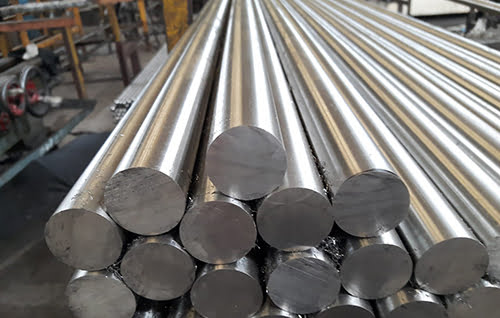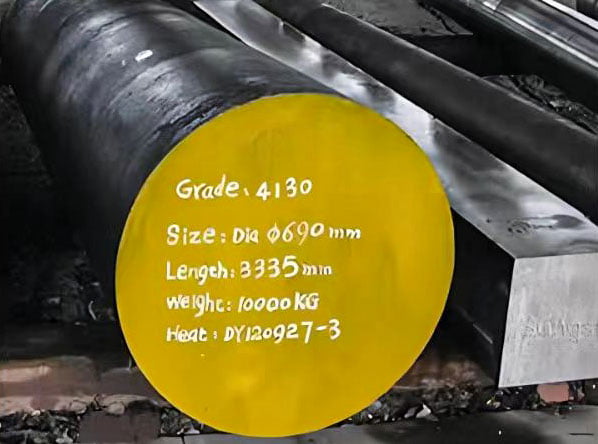Introduction
4130 Steel Composition: Unlocking the Secrets of this Remarkable Alloy.In the realm of metallurgy, 4130 steel composition stands out as a versatile and widely used alloy. This article delves into the various aspects of this alloy, exploring its composition, properties, applications, and the reasons behind its widespread use. If you’re curious about what makes 4130 steel so special, you’ve come to the right place.
Understanding Alloy Steels
Alloy steels are a fascinating category of materials that play a pivotal role in various industries due to their unique combination of properties. Let’s take a closer look at the intricate world of alloy steels to understand what makes them so indispensable.

Alloy Steel Basics
At its core, alloy steel is a type of steel infused with various elements, often including chromium, nickel, manganese, and molybdenum. This infusion transforms ordinary steel into a remarkable material with enhanced properties, making it stronger, more durable, and resistant to wear and corrosion.
Tailored Properties
One of the key attractions of alloy steels is their versatility. Engineers and manufacturers can fine-tune the composition of alloy steel to achieve specific properties. Whether it’s a requirement for high tensile strength, improved heat resistance, or better corrosion resistance, alloy steels can be customized to meet these needs.
Applications Across Industries
The adaptability of alloy steels makes them prevalent in numerous sectors. From construction to automotive, aerospace to medical devices, alloy steels find applications in an array of products and structures. Their wide range of applications underscores their significance in our modern world.

Resistance to Corrosion
4130 Steel Composition: Unlocking the Secrets of this Remarkable Alloy.Alloy steels often contain elements that enhance their resistance to corrosion. This is particularly valuable in industries where exposure to harsh environments or chemicals is common. The ability to resist corrosion ensures the longevity and reliability of materials and components.
Enhancing Durability
In scenarios where wear and tear are constant challenges, such as in heavy machinery or cutting tools, alloy steels shine. Their durability and resistance to abrasion make them vital in extending the lifespan of critical equipment.
Meeting Regulatory Standards
Industries, especially those with strict safety and quality standards, rely on alloy steels to meet regulatory requirements. These materials offer the structural integrity and performance needed to adhere to safety guidelines and deliver superior results.
The Role of Alloy Steel in Modern Advancements
Innovation is at the heart of the alloy steel industry. Researchers and engineers continuously explore new alloy compositions and manufacturing techniques, pushing the boundaries of what these materials can achieve. This pursuit of progress leads to breakthroughs in various fields.4130 Steel Composition: Unlocking the Secrets of this Remarkable Alloy.

The Chemistry of 4130 Steel
Understanding the chemistry of 4130 steel is key to unlocking its exceptional properties. In this section, we’ll delve deeper into the specific elements and their concentrations that make up this remarkable alloy.
Main Components
4130 steel primarily consists of iron (Fe), carbon (C), chromium (Cr), and molybdenum (Mo). The specific composition is finely tuned to create a material that boasts a unique blend of strength, durability, and versatility.
- Iron (Fe): As the base element, iron provides the structural foundation for 4130 steel. It’s abundant and readily available, making it an economically viable choice.
- Carbon (C): Carbon content in 4130 steel typically ranges from 0.28% to 0.33%. This moderate carbon content enhances the material’s strength and hardness, while maintaining good weldability.
- Chromium (Cr): Chromium, in the range of 0.8% to 1.1%, is responsible for the alloy’s resistance to corrosion and wear. This addition enables 4130 steel to withstand challenging environments.
- Molybdenum (Mo): The inclusion of molybdenum, typically at 0.15% to 0.25%, significantly improves 4130 steel’s ability to withstand high temperatures and stress. It plays a crucial role in enhancing the alloy’s overall toughness and strength.4130 Steel Composition: Unlocking the Secrets of this Remarkable Alloy.
The Role of Heat Treatment
The unique properties of 4130 steel aren’t solely attributed to its chemical composition. Heat treatment, a controlled process involving heating and cooling, further refines the alloy’s microstructure and mechanical characteristics. Through heat treatment, the alloy can be tailored to meet specific requirements.
- Austenitizing: This is the initial stage where the steel is heated to a critical temperature, causing the formation of austenite. This step is followed by rapid cooling, which prepares the material for the next phase.
- Quenching: Quenching involves cooling the steel quickly, typically in oil or water, to “lock in” the desired properties. This process affects the alloy’s hardness and strength.
- Tempering: After quenching, tempering follows, which involves reheating the steel to a lower temperature. This relieves internal stresses and balances hardness with toughness, resulting in a more ductile material.4130 Steel Composition: Unlocking the Secrets of this Remarkable Alloy.
Achieving the Perfect Balance
4130 Steel Composition: Unlocking the Secrets of this Remarkable Alloy.The art of working with 4130 steel lies in finding the perfect balance between the alloy’s composition and heat treatment. The right combination results in an alloy that is not only strong and durable but also readily weldable and machinable.
A Multifaceted Alloy
4130 steel’s chemistry makes it suitable for various applications, from aircraft components to bicycle frames. Its unique blend of elements and the ability to tailor its properties through heat treatment render it indispensable in industries requiring high-performance materials.

Mechanical Properties
This section will explore the remarkable mechanical properties of 4130 steel. From strength to ductility, it has it all.
Heat Treatment: Unleashing the Potential
A significant advantage of 4130 steel is its responsiveness to heat treatment. We’ll unravel how heat treatment can modify its properties for various applications.
Applications in Aerospace
4130 steel’s lightweight yet robust nature makes it a go-to choice in aerospace applications. Let’s explore its role in this industry.
Automotive Industry: Under the Hood
When you pop the hood of your car, there’s a good chance you’ll find 4130 steel components. We’ll uncover its role in the automotive world.
Sporting Equipment: Strength and Agility
Whether in bicycles or racing cars, 4130 steel enhances sporting equipment’s performance. Discover how this alloy contributes to sports.4130 Steel Composition: Unlocking the Secrets of this Remarkable Alloy.
Oil and Gas: Withstanding Harsh Environments
In the demanding world of oil and gas exploration, durability is paramount. Find out how 4130 steel meets these demands.
The Welding Challenge
Welding 4130 steel can be a bit tricky. We’ll provide insights on how to tackle this challenge effectively.

Corrosion Resistance
Corrosion can be a significant issue for metals. Learn how 4130 steel stands strong against this common enemy.
Sustainability and Recyclability
In an era of environmental consciousness, it’s vital to understand how 4130 steel aligns with sustainability and recycling goals.
Comparing 4130 to Other Alloys
How does 4130 steel stack up against other steel alloys? Let’s see how it fares in a head-to-head comparison.
The Future of 4130 Steel
What lies ahead for this remarkable alloy? We’ll discuss potential innovations and emerging trends.4130 Steel Composition: Unlocking the Secrets of this Remarkable Alloy.
Conclusion
4130 steel composition is a topic brimming with insights and potential applications. Its unique combination of strength, flexibility, and resilience has earned it a significant place in various industries. Understanding its composition and properties is key to harnessing its full potential.
Frequently Asked Questions (FAQs)
- What is the primary advantage of 4130 steel in aerospace applications?
- 4130 steel’s lightweight yet robust nature makes it ideal for aircraft and spacecraft components, contributing to fuel efficiency and performance.
- Can 4130 steel be welded easily?
- Welding 4130 steel can be challenging due to its specific heat treatment requirements, but with the right techniques, it can be done effectively.
- Is 4130 steel environmentally friendly?
- Yes, 4130 steel is considered environmentally friendly as it is recyclable and aligns with sustainability goals.
- How does 4130 steel compare to other steel alloys in terms of strength?
- 4130 steel offers an excellent balance of strength and ductility, making it a versatile choice compared to many other steel alloys.
- What innovations can we expect in the future regarding 4130 steel?
- The future may bring advancements in the heat treatment process, opening up new possibilities for this alloy’s applications.

